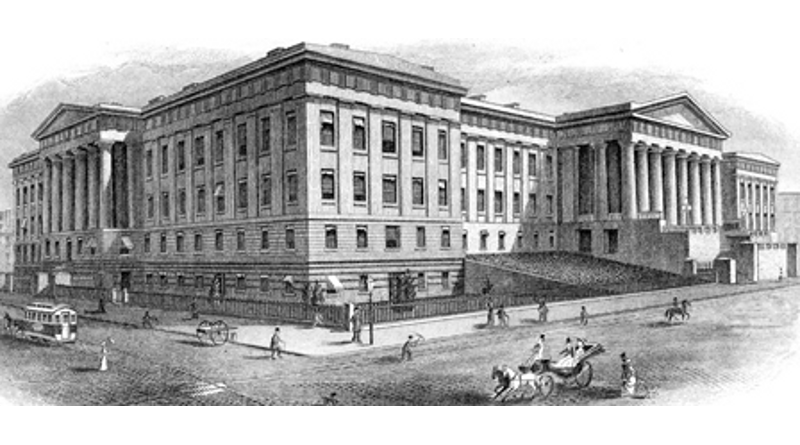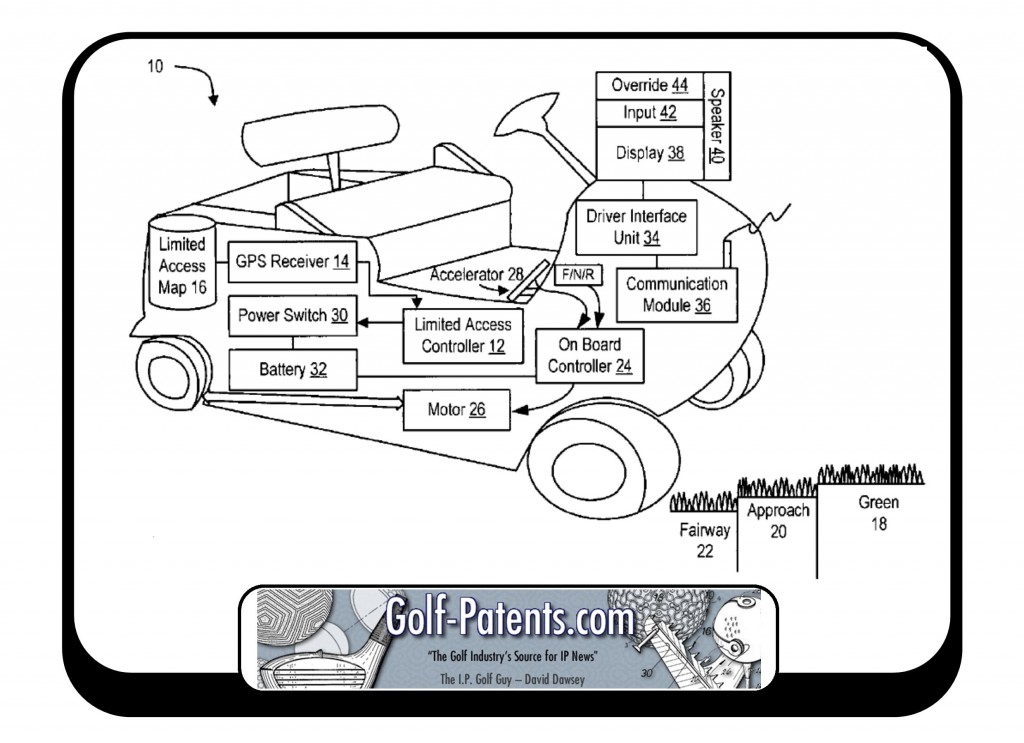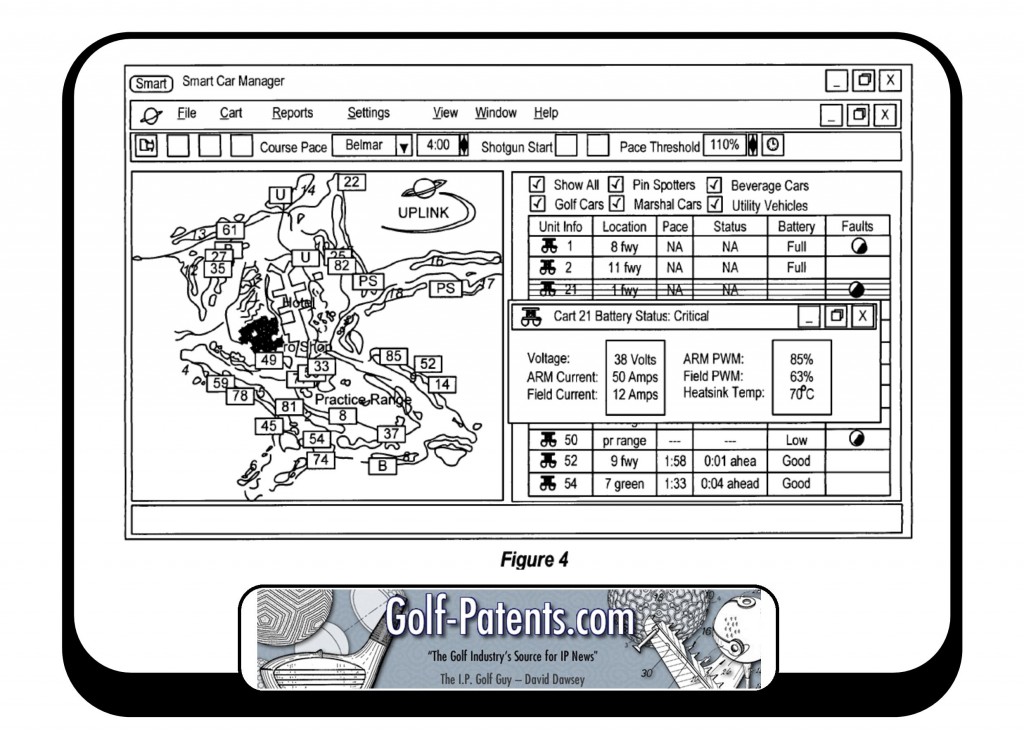More Golf Patent Litigation Concerning a $1.79 Billion Segment of the Golf Equipment Industry
Any guess as to what segment of the golf equipment industry has annual sales of over $1.79 billion (at least in 2013), and is not associated with clubs or balls? Well, as you can imagine, once a segment of golf equipment enters the triple comma club in terms of sales, patents play a critical role in protecting one’s innovations and R&D efforts. As the saying goes, “innovation without protection is philanthropy.”
So what’s the segment? Golf carts, of course.
Yesterday Club Car, LLC filed this complaint against Yamaha Golf-Car Company alleging infringement of USPN’s 7,239,965 and 7,480,569, both titled “Method and System for Golf Cart Control.” The complaint explains what this lawsuit is all about:
Club Car is an industry leader in the development and sale of golf cars and golf car fleet management technology. From pioneering the integration of the Visage fleet management system to the development of Connected® technology, Club Car continues to develop cutting-edge fleet management technology that complements its best-in-class golf cars.
The methods and systems claimed by the ’965 and ’569 patents are an integral part of Club Car’s fleet management technology. The diverse suite of functionalities offered in Club Car’s fleet management systems include, among other things, the ability to set or control golf car movement and speed in defined course areas (geo-fencing) and the ability to set fleet-wide conditions, such as restricting car movement anywhere outside of the golf car path.
The Patents-in-Suit
Club Car is the owner by assignment of the ’965 and ’569 patents.
The ’965 patent was issued by the United States Patent and Trademark Office on July 3, 2007 from United States Patent Application No. 10/754,916.
The ’569 patent was issued by the United States Patent and Trademark Office on January 20, 2009 from United States Patent Application No. 11/758,702.
The ’965 and ’569 patents are directed to technological improvements resolving specific problems associated with the management and control of golf cars. More specifically, the ’965 and ’569 patents solve the problem of monitoring and controlling the location of golf cars “to preempt or otherwise reduce damage from golf car[] movement” in certain at-risk portions of a golf course.
As described in the ’965 and ’569 patents, “[g]olf course owners generally make a substantial financial investment in a golf course in order to develop and maintain the appearance and quality of play expected by golfers.” (Ex. A at 1:18-21.) In a relatively short period of time, however, an inattentive or careless golf car driver “can create considerable damage to sensitive golfing areas, such as greens, simply by driving a golf cart in the wrong place, such as locations having wet turf that is particularly susceptible to damage.” (Id. at 1:36-41.) Drivers “can cause even greater amounts of damage and also present a safety hazard by driving too fast or recklessly near other golfers or natural hazards, such as cliffs, water, steep inclines or sharp turns.” (Id. at 1:41-45.)
To combat these problems, golf course owners have traditionally employed a marshal who keeps watch over golfers and attempts to enforce a desired pace of play. However, the marshal’s ability to oversee all golfers is limited by the size, terrain, and layout of the golf course. The introduction of Global Positioning System (“GPS”) technology into golf cars improved the marshal’s ability to track the location of golf cars on the course. But even with this technology, a marshal can only discern the location of each golf car in the fleet. The marshal may foresee the potential for damage to the course and/or the golf car driver, but they will be unable to preempt the situation unless they are located close enough to physically do so. (See Ex. A at 1:46-60.) Thus, as the ’965 and ’569 patents recognize, there existed a need for “a method and system which applied a golf [car’s] GPS position on a golf course to preempt or otherwise reduce damage from golf [car] movement” by “defin[ing] areas of a golf course to which golf [cars] have limited access imposed by restrictions on golf [car] movements within or proximate to the limited access areas.” (Id. at 1:64-2:4.)
The ’965 and ’569 patents resolve the problems identified in the prior art in a novel and concrete way by, among other things, incorporating a controller “that automatically imposes restrictions on a golf [car’s] movement … if the golf cart is positioned to enter a limited access area.” (Ex. A at 2:49-54.) These restrictions may be “tailored to the type of golf cart, type of limited access area and the projected golf cart path based on GPS positioning or dead reckoning.” (Id. at 2:55-61.)
Yep, it is all about that dreaded cart control feature that every golfer has cursed at some point in their life. So perhaps there is a potential upside for golfers!
PS – follow me on Twitter (@GolfPatents)
PPS – If you like what we are doing, please considering helping us out and make your online gear purchases through our Amazon affiliate link. Every little purchase helps us keep the site up and running! Thanks.



